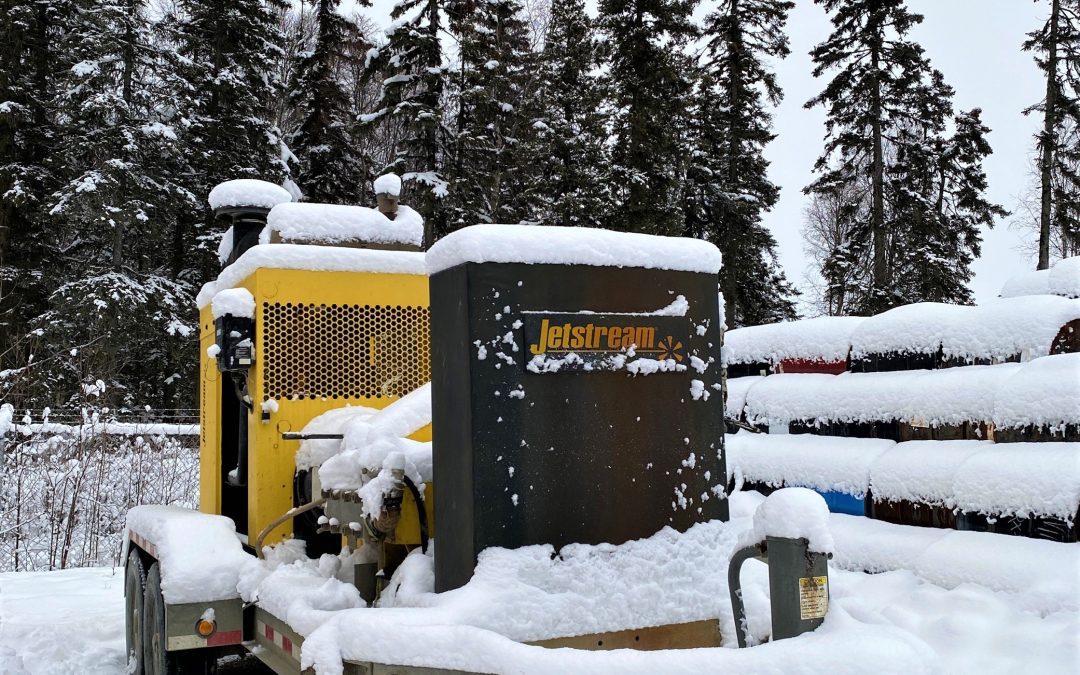Extreme weather conditions, especially freezing temperatures, require special care for waterblasting equipment. Routine maintenance is always important, but requirements ramp up when temperatures drop below freezing. Winterization is critical to keep the equipment in good working condition and maintain operator safety. For example, a unit damaged by freezing water has an increased risk of having hoses burst or fittings fly away from the unit. Knowing the condition of your machine and the weather conditions of your worksite help determine what precautions to take.
Below, we explain when to winterize your waterblasting units and how to do it.
When to Winterize your Waterblasting Unit
Do you need to winterize your machine if you plan to use it? Waterblasting units can be used in cold weather — even in freezing temperatures. When in use, the unit creates enough heat to avoid freezing. However, it does need to run continuously in freezing temperatures. If your unit will sit idle, you can either winterize it or place it in heated storage. Some contractors use storage units or insulated shipping containers to protect their waterblasting unit when it sits idle in the winter. Other contractors who choose to leave the unit outdoors for extended periods winterize instead.
If the waterblasting unit is used periodically throughout the season, you can complete the winterization process multiple times as needed. Make sure to drain the water before any idle time to keep the equipment in top condition — even when traveling between jobsites.
Some contractors travel long distances with their equipment. One contractor we spoke with transported their waterblasting trailer through a mountain pass where they reached a high elevation and the temperatures dipped below freezing. When they reached the jobsite, they found that the waterblasting unit sustained damage because they didn’t drain the water from the system. Knowing the weather and temperature in locations where the unit will travel can help protect it against inclement weather, including conditions caused by high altitudes.
How to Winterize your Unit
We recommend completely draining water from the waterblasting tank and system when the unit will be sitting idle in cold weather. Follow these steps for winterization:
- Setup: Disconnect the water supply suction line and high-pressure discharge hose from the manifold. Allow the water to drain fully before closing.
- Add Anti-Freeze: The stuffing box often holds water that can freeze and damage the univalve, plungers and manifold. Jetstream waterblasting units have pipe fittings that can be assembled into a funnel to allow the addition of anti-freeze. Install the assembly onto the suction side of the manifold and pour in a glycol-based anti-freeze. Approximately 0.5 gallons (2 liters) of anti-freeze is required.
- Run Anti-Freeze Through the System: Before turning the engine on, bypass the low-water shutdown by placing the override switch in the ON position. Then, be sure the area in the path of the discharge fitting is clear on the manifold. The anti-freeze will be discharged through this fitting during the procedure.
- Idle the Engine: Start the engine and let it idle. Apply light pressure to the clutch handle to gently feather it. Let the plungers move back and forth slowly until anti-freeze discharges from the manifold port.
- Disengage the Clutch and Shut Off the Engine: At this point, remove the funnel assembly from the suction port and reconnect the suction hose.
- Disconnect the Lubrication Lines: Drain the lines fully. Similarly, disconnect and drain the discharge hose from the charge pump before reconnecting.
- Rinse off Anti-Freeze: Completely clean off the unit to ensure the water piping system is protected.
Working Through the Winter
Weather directly impacts the safety of your waterblasting unit. Make sure to keep an eye on the forecast when working and traveling to ensure your unit doesn’t require winterization before, during or after. Contact our experts today to learn more about when winterization is necessary and how to complete the process.

